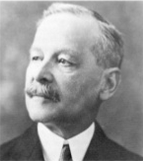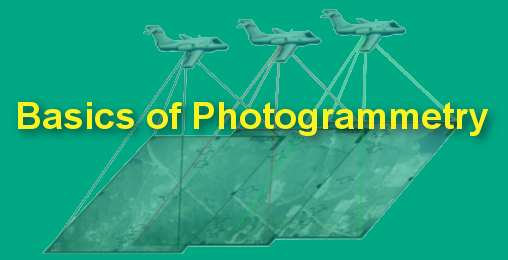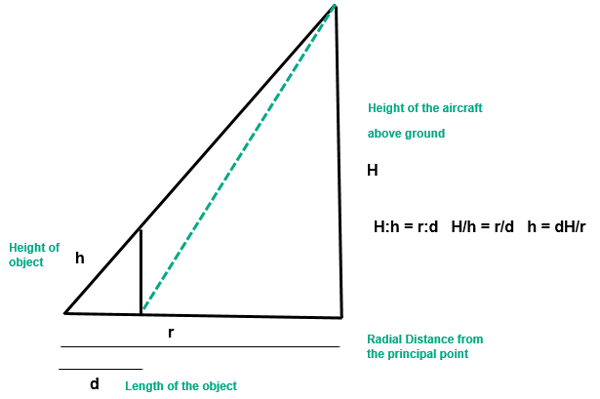[vc_row layout=”normal” margintop=”0″ marginbottom=”15″ paddingtop=”0″ paddingbottom=”0″ bg_color=”#ffffff” bg_repeat=”repeat” bg_stretch=”no” en_border=”no” border_color=”#e8e8e8″][vc_column width=”1/1″][vc_column_text]1. Introduction to Photogrammetry
1.2 Development Cycles of the Photogrammetry
1.3 Application of Photogrammetry
2. Data Acquisition
2.1 Geometric Characteristics of Aerial Photographs
2.2 Geometric Characteristics of a Vertical Photographs
3. Camera and Ground Relationships
3.2 Determining Height from the Air Photos[/vc_column_text][/vc_column][/vc_row][vc_row layout=”normal” margintop=”0″ marginbottom=”15″ paddingtop=”0″ paddingbottom=”0″ bg_color=”#ffffff” bg_repeat=”repeat” bg_stretch=”no” en_border=”no” border_color=”#e8e8e8″][vc_column width=”1/1″][vc_column_text]
1. Introduction to Photogrammetry
It is a science and technology to derive the spatial measurement and other mathematical products from the photograph. The word photogrammetry is made from three Greek words.
Photos = Light
Gramma = Letter or something drawn
Metrein = To measure
Or we can say in simple term
“PHOTOGRAMMETRY = PHOTO + GRAMMETRY”
Photo = Picture, Grammetry= Measurement
The analysis that can be done through the photogrammetry ranges from: getting the length, area and elevation value from the hardcopy map, creating digital elevation model (DEM) from the hardcopy topographic map, orthophotos, and creating digital raster images.
There are two types of photogrammetry: digital or softcopy photogrammetry and hardcopy photogrammetry. If the digital or raster image is used for the calculation then it falls under digital photogrammetry and similarly if hardcopy image is used then it is a hardcopy photogrammetry. Historically creating the topographic map was the mostly used photogrammetry in practice. Today, photogrammetry process is used for the variety purposes in the GIS field: creating digital elevation model (DEM), accurate raster image backdrops for visualizing GIS data.
[/vc_column_text][/vc_column][/vc_row][vc_row layout=”normal” margintop=”0″ marginbottom=”15″ paddingtop=”0″ paddingbottom=”0″ bg_color=”#ffffff” bg_repeat=”repeat” bg_stretch=”no” en_border=”no” border_color=”#e8e8e8″][vc_column width=”1/2″][vc_column_text]

[/vc_column_text][/vc_column][vc_column width=”1/2″][vc_column_text]

[/vc_column_text][/vc_column][/vc_row][vc_row layout=”normal” margintop=”0″ marginbottom=”15″ paddingtop=”0″ paddingbottom=”0″ bg_color=”#ffffff” bg_repeat=”repeat” bg_stretch=”no” en_border=”no” border_color=”#e8e8e8″][vc_column width=”1/1″][vc_column_text]Difference between Photogrammetry and Remote Sensing
Photogrammetry: It is a measurement of the geometric properties of the object by the use of the photographs.
Remote Sensing: It is used to determine the condition of the object based on the radiometric property of it.
[/vc_column_text][/vc_column][/vc_row][vc_row layout=”normal” margintop=”0″ marginbottom=”15″ paddingtop=”0″ paddingbottom=”0″ bg_color=”#ffffff” bg_repeat=”repeat” bg_stretch=”no” en_border=”no” border_color=”#e8e8e8″][vc_column width=”1/1″][vc_column_text]
1.1 History of Photogrammetry:
Getting the picture view of the surrounding on the paper started back from the Da vinci in 1480 A.D. Then in 1525 Albrecht Duerer created instrument to draw the perspective drawing using laws of perspective. In 1840 the first use of photogrammetry was by the French Geodeist Arago using process called Daguerreotype.

Daguerreotype is an obsolete photographic process, invented in 1839, in which a picture made on a silver surface sensitized with iodine was developed by exposure to mercury vapor.(dictionary.com)
[/vc_column_text][/vc_column][/vc_row][vc_row layout=”normal” margintop=”0″ marginbottom=”15″ paddingtop=”0″ paddingbottom=”0″ bg_color=”#ffffff” bg_repeat=”repeat” bg_stretch=”no” en_border=”no” border_color=”#e8e8e8″][vc_column width=”1/1″][vc_accordion collapsible=”yes”][vc_accordion_tab title=”1849″][vc_column_text]
In 1849, Frenchman Laussedat who is known as the “father of photogrammetry” was the first person to use terrestrial photographs for the topographic map compilation.
[/vc_column_text][/vc_accordion_tab][vc_accordion_tab title=”1858″][vc_column_text]
 In 1858 Laussedat tested first aerial photography using kites and in 1862 using ballons.
In 1858 Laussedat tested first aerial photography using kites and in 1862 using ballons.
[/vc_column_text][/vc_accordion_tab][vc_accordion_tab title=”1865″][vc_column_text]
 In 1865 Italian Geodeist Porro designed the photogoniometer which helps significantly during that time to remove lens distortion.
In 1865 Italian Geodeist Porro designed the photogoniometer which helps significantly during that time to remove lens distortion.
[/vc_column_text][/vc_accordion_tab][vc_accordion_tab title=”1893″][vc_column_text]
 In 1893, Meydenbauer was the first person to use term ‘photogrammetry’.
In 1893, Meydenbauer was the first person to use term ‘photogrammetry’.
[/vc_column_text][/vc_accordion_tab][vc_accordion_tab title=”1896″][vc_column_text]
 In 1896 Canadian Surveyor general Deville created the stereo–planigraph, the first instrument to create stereoscopic plotting instrument.
In 1896 Canadian Surveyor general Deville created the stereo–planigraph, the first instrument to create stereoscopic plotting instrument.
[/vc_column_text][/vc_accordion_tab][vc_accordion_tab title=”1903″][vc_column_text]
 In 1903 first Airplane was invented by Wright Brothers.
In 1903 first Airplane was invented by Wright Brothers.
[/vc_column_text][/vc_accordion_tab][vc_accordion_tab title=”1908″][vc_column_text]
 In 1908, the first aerial photograph was captured by the Italian captain Cesare Tardivo for the mapping purpose.
In 1908, the first aerial photograph was captured by the Italian captain Cesare Tardivo for the mapping purpose.
[/vc_column_text][/vc_accordion_tab][/vc_accordion][/vc_column][/vc_row][vc_row layout=”normal” margintop=”0″ marginbottom=”15″ paddingtop=”0″ paddingbottom=”0″ bg_color=”#ffffff” bg_repeat=”repeat” bg_stretch=”no” en_border=”no” border_color=”#e8e8e8″][vc_column width=”1/1″][vc_column_text]
1.2 Development Cycles of the Photogrammetry.
The development of the photogrammetry from year 1850 went through different cycles, each cycles is of around 50 years.
Plane Table Photogrammetry: This cycle started form year 1850 to year 1900
Analog Photogrammetry: It started form year 1900 to year 1960. Optical or mechanical instruments were used to reconstruct the 3D geometry from the overlapping images. The main product during this phase was topographic map.
Analytical Photogrammetry: Computer replaces the expensive optical or mechanical components. The resulting devices were digital/analog hybrids. The outputs were the topographic map but in the digital format for example DEM (digital elevation map) or digital map.
Digital Photogrammetry: Digital Photogrammetry is also called softcopy photogrammetry, it is applied to digital images that is stored in the computer. The output of this is in the digital format: Digital Elevation Model (DEM), digital maps, digital othophotos stored in the computer.
[/vc_column_text][/vc_column][/vc_row][vc_row layout=”normal” margintop=”0″ marginbottom=”15″ paddingtop=”0″ paddingbottom=”0″ bg_color=”#ffffff” bg_repeat=”repeat” bg_stretch=”no” en_border=”no” border_color=”#e8e8e8″][vc_column width=”1/1″][vc_column_text]
1.3 Application of Photogrammetry:
- Topographic Maps
- Creation of Orthoimages, Digital Elevation Models, Virtual Landscapes
- Nadir image which is important for the mapping
- Overlap and sidelap is required to provide 3D information
- Land Survey and Highway Engineering
- Creating different type of maps, tax maps, soil maps, forest maps, geologic maps
- Photogrammetry is also used for traffic management system
- It is heavily used by the Military System: mission planning, rehearsal and targeting
[/vc_column_text][/vc_column][/vc_row][vc_row layout=”normal” margintop=”0″ marginbottom=”15″ paddingtop=”0″ paddingbottom=”0″ bg_color=”#ffffff” bg_repeat=”repeat” bg_stretch=”no” en_border=”no” border_color=”#e8e8e8″][vc_column width=”1/1″][vc_column_text]
1.4 Types of Photogrammetry: Photogrammetry can be classified in different ways but the standard way is to split into two fields based on the mounted camera position. On this basis we have Aerial Photogrammetry and Close Range Photogrammetry.
[/vc_column_text][/vc_column][/vc_row][vc_row layout=”normal” margintop=”0″ marginbottom=”15″ paddingtop=”0″ paddingbottom=”0″ bg_color=”#ffffff” bg_repeat=”repeat” bg_stretch=”no” en_border=”no” border_color=”#e8e8e8″][vc_column width=”1/1″][vc_column_text]
 Aerial Photogrammetry: Camera is mounted on the airplane and mostly pointing vertically downwards toward the ground. Numerous overlapping pictures or images are taken along the flight path.
Aerial Photogrammetry: Camera is mounted on the airplane and mostly pointing vertically downwards toward the ground. Numerous overlapping pictures or images are taken along the flight path.
[/vc_column_text][/vc_column][/vc_row][vc_row layout=”normal” margintop=”0″ marginbottom=”15″ paddingtop=”0″ paddingbottom=”0″ bg_color=”#ffffff” bg_repeat=”repeat” bg_stretch=”no” en_border=”no” border_color=”#e8e8e8″][vc_column width=”1/1″][vc_column_text]
 Close Range Photogrammetry: In this type of photogrammetry camera is closed to the object usually hand held or in a tripod. Usually this type of photogrammetry is done for non-topographic purpose, like building measurement, forensic and accident scenes, film sets, engineering structures and so on.
Close Range Photogrammetry: In this type of photogrammetry camera is closed to the object usually hand held or in a tripod. Usually this type of photogrammetry is done for non-topographic purpose, like building measurement, forensic and accident scenes, film sets, engineering structures and so on.
[/vc_column_text][/vc_column][/vc_row][vc_row layout=”normal” margintop=”0″ marginbottom=”15″ paddingtop=”0″ paddingbottom=”0″ bg_color=”#ffffff” bg_repeat=”repeat” bg_stretch=”no” en_border=”no” border_color=”#e8e8e8″][vc_column width=”1/1″][vc_column_text]
2. Data Acquisition
In photogrammetry data acquisition is define as the process of obtaining the reliable information about the object of interest. This is achieved without physical being in contact with the objects.
The remotely acquired image can be grouped into four:
Geometric Information: It involves in the spatial position and the shape of objects.
Physical Information: It refers to the electromagnetic radiation properties of objects.
Semantic Information: It is refer to the meaning of a required image.
Temporal Information: Recorded images with different date shows the change in the object.[/vc_column_text][/vc_column][/vc_row][vc_row layout=”normal” margintop=”0″ marginbottom=”15″ paddingtop=”0″ paddingbottom=”0″ bg_color=”#ffffff” bg_repeat=”repeat” bg_stretch=”no” en_border=”no” border_color=”#e8e8e8″][vc_column width=”1/1″][vc_column_text]
2.1 Geometric Characteristics of Aerial Photographs:
 Aerial photographs are classified into two categories: vertical or oblique. Vertical photographs have the camera axis directed as vertically as possible. Most of time vertical photography use single lens camera to acquire remotely sensed image. It is very hard to obtain a true vertical image due to the angular rotation or tilts. This angular rotation or tilts are due to the angular attitude of the aircraft at the instant of exposure. This unavoidable tilts which results in 1 to 3 degree inclination of camera optical axis results in the capturing of titled photographs.
Aerial photographs are classified into two categories: vertical or oblique. Vertical photographs have the camera axis directed as vertically as possible. Most of time vertical photography use single lens camera to acquire remotely sensed image. It is very hard to obtain a true vertical image due to the angular rotation or tilts. This angular rotation or tilts are due to the angular attitude of the aircraft at the instant of exposure. This unavoidable tilts which results in 1 to 3 degree inclination of camera optical axis results in the capturing of titled photographs.
If there is intention of degree of inclination of camera optical axis then it is called Oblique photographs. High oblique photographs contains the image of horizon and Low Oblique photographs exclude it.[/vc_column_text][/vc_column][/vc_row][vc_row layout=”normal” margintop=”0″ marginbottom=”15″ paddingtop=”0″ paddingbottom=”0″ bg_color=”#ffffff” bg_repeat=”repeat” bg_stretch=”no” en_border=”no” border_color=”#e8e8e8″][vc_column width=”1/2″][vc_column_text]

[/vc_column_text][/vc_column][vc_column width=”1/2″][vc_column_text]

[/vc_column_text][/vc_column][/vc_row][vc_row layout=”normal” margintop=”0″ marginbottom=”15″ paddingtop=”0″ paddingbottom=”0″ bg_color=”#ffffff” bg_repeat=”repeat” bg_stretch=”no” en_border=”no” border_color=”#e8e8e8″][vc_column width=”1/1″][vc_column_text]2.2 Geometric Characteristics of a Vertical Photographs:
Photographs taken by the camera are the perspective view. Image we see is the 3D view and camera convert 3D look of the image to the 2D. Our brain process the depth and other features of the photographs by using the 3D concept. Camera uses powerful concept of perspective to transfer 3D image to 2D.
Most vertical image acquires distortion in image due to image motion and image displacement due to topography and the effect of parallax. The geometric center of the air photo or the principal point does not have image displacement. The perpendicular from the principal point to the ground is called the Nadir or the Plumb point. Towards the margins of the air photo, the image displacement increases due to effect of the parallax.
The word parallax is derived from the Greek term parallaxis, which means alteration. The object we are observing at any given distance is dependent on the viewpoint or the position of the viewer. Perspective shift occurs when a close object is observed from various viewpoints with respective to the distant background.
Parallax can be describe with the help of the geometry. On the above figure object A and Object B are two viewpoints observing the object O. D is the baseline distance between two viewpoints, and then unknown variable R can be calculated. You can use trigonometry to calculate the unknown values.
In a simple way to explain the parallax is the way our eyes operate. We are always using parallax but do not realize because our brain process things very fast. Hold your arm straight in front of you at eye level and then point your forefinger up. After that alternatively blink each of your eyes and you will notice the forefingers that is arm length appears to move with the respect to the background object. This is the parallax effect.
[/vc_column_text][/vc_column][/vc_row][vc_row layout=”normal” margintop=”0″ marginbottom=”15″ paddingtop=”0″ paddingbottom=”0″ bg_color=”#ffffff” bg_repeat=”repeat” bg_stretch=”no” en_border=”no” border_color=”#e8e8e8″][vc_column width=”1/1″][vc_column_text]2.3 Flight Characteristics:
Most of Photographs taken by the frame camera are along flight lines. The line on the ground which is just under the camera lens during photo capturing is called the nadir line. All the photographs taken with the degree of endlap. Endlap is the repeat of the some portion of the successive photographs. This not only ensure that end part of photographs is covered but also it is essential for the stereoscopic coverage.
Aerial photographs are generally taken North-South or East-West direction along flightlines. Flightlines are the path taken by the aircraft to cover the area of interest. This are imaginary lines drawn on the paper by the specialist so whole region is covered for the photographs and also there is enough succession of overlapping. The photos that overlaps within flightlines are called forward overlap and between flightlines are called sidelap.(image source: www.nrcan.gc.ca)
The area that is overlapped for the forward should be between 60-70 percentage. It is used for the stereoscopic view and complete coverage of the area of interest.
The area that is overlapped for the sidelap should be between 25-40 percentage. It is used to ensure that no area is left unphotographhed.
2.4 Coverage Errors: There are two errors that can lead for unsuccessful capturing of photographs: Drift and Crab. Drift is the lateral shift of the aircraft from the flight lines that may be caused by the blowing wind or the pilot error. So it is said that it is good practice to capture a photographs on a sunny day with no wind. Crab occurs when the aircraft is not oriented with flightline.
[/vc_column_text][/vc_column][/vc_row][vc_row layout=”normal” margintop=”0″ marginbottom=”15″ paddingtop=”0″ paddingbottom=”0″ bg_color=”#ffffff” bg_repeat=”repeat” bg_stretch=”no” en_border=”no” border_color=”#e8e8e8″][vc_column width=”1/1″][vc_column_text]
3. Camera and Ground Relationships
The rays coming from the ground object penetrates at the exposure station C and passes through the lens to create a negative image located at f distance from the C. The straight line from the exposure station C to the ground is called Nadir.
3.1 Photographic Scale: A photographic scale is like a map scale is an expression that states one unit (any unit) of distance on the map represent a specific number on the ground. For example 1: 50000 mean 1 meter or 1 Km is 50000 meter or 50000 Km on the ground.
There are two method of calculating Photographic Scale:
Arithmetic Ratio: It is the ratio between the photo distance to the ground distance. It is possible to calculate the distance between two points of the object on the photo and same points of the object on the ground.
PHOTO SCALE = Photo Distance / Ground Distance
Note: Unit of both distances should be in the same unit.
Camera – Altitude Relationships. Next method is the use of camera focal length and the height of the aircraft. The relationship is given by
PHOTO SCALE = focal length (f) / aircraft height (H)
Note: see above image for f and H[/vc_column_text][/vc_column][/vc_row][vc_row layout=”normal” margintop=”0″ marginbottom=”15″ paddingtop=”0″ paddingbottom=”0″ bg_color=”#ffffff” bg_repeat=”repeat” bg_stretch=”no” en_border=”no” border_color=”#e8e8e8″][vc_column width=”1/1″][vc_column_text]3.2 Determining Height from the Air Photos:
There are two way to determine the height of the objects: the single photo method and the Stereopair Parallax Method
Single Photo Method: It is simple to use and it is applicable to the vertical features on the air photo where you can see top and bottom part of it. See above figure, it uses the method of radial displacement of object varies proportionately with the height of the aircraft. It is determined by the formula, h = dH/r
Stereopair Parallax Method: This method requires two overlapping images on the same flight line, height of the aircraft, and the average photo base length. The photo base length is the distance from the geometric center (or principal point) of one air photo to another. The principal of this method is radial displacement of the image occurs proportionately with the height of the aircraft, but this method takes in consideration of the measurement of two air photos.
[/vc_column_text][/vc_column][/vc_row][vc_row layout=”normal” margintop=”0″ marginbottom=”15″ paddingtop=”0″ paddingbottom=”0″ bg_color=”#ffffff” bg_repeat=”repeat” bg_stretch=”no” en_border=”no” border_color=”#e8e8e8″][vc_column width=”1/1″][vc_column_text]References:
M.R. Rifas Ahamed, Historical Development of Photogrammetry, Faculty of Geomatics, University of SriLanka
http://hosting.soonet.ca/eliris/remotesensing/bl130lec4.html, Topic 4: Vertical Aerial Photography
T.M. Lillesand, & R.W. Kiefer, J.W. Chipman, Remote Sensing and Image Interpretation, Sixth Edition, John Wiley & Sons ,Inc.,Basic Principles of Photogrammetry
How the parallax effect is used in web design , http://www.techrepublic.com/blog/web-designer/how-the-parallax-effect-is-used-in-web-design/[/vc_column_text][/vc_column][/vc_row][vc_row layout=”normal” margintop=”0″ marginbottom=”15″ paddingtop=”0″ paddingbottom=”0″ bg_color=”#ffffff” bg_repeat=”repeat” bg_stretch=”no” en_border=”no” border_color=”#e8e8e8″][vc_column width=”1/1″][tagline_box action_box_style=”style1″ call_text=”NOW READ:” call_text_small=”Know Basics of Remote Sensing Quickly and Become Expert” title=”READ” target=”_self” color=”blue” size=”small” margin=”0″ href=”http://grindgis.com/what-is-remote-sensing/know-basics-of-remote-sensing”][/vc_column][/vc_row]










Tatek
25 Jun 2015I Thank you too for your support and collaboration!! keep in touch!!
Thanks in advance for your support!!
admin
26 Jun 2015Thank you Tatek, appreciate for your comment.
Geospatial &Space Technology
11 Apr 2017great material here,we are glad to acquire the knowledge about photogrammetry,very clear to be understood by everyone.thank you
admin
12 Apr 2017Thank you for your comment
MFR096
29 Dec 2019Thanks so useful !
Mustefa
9 Feb 2021very interesting